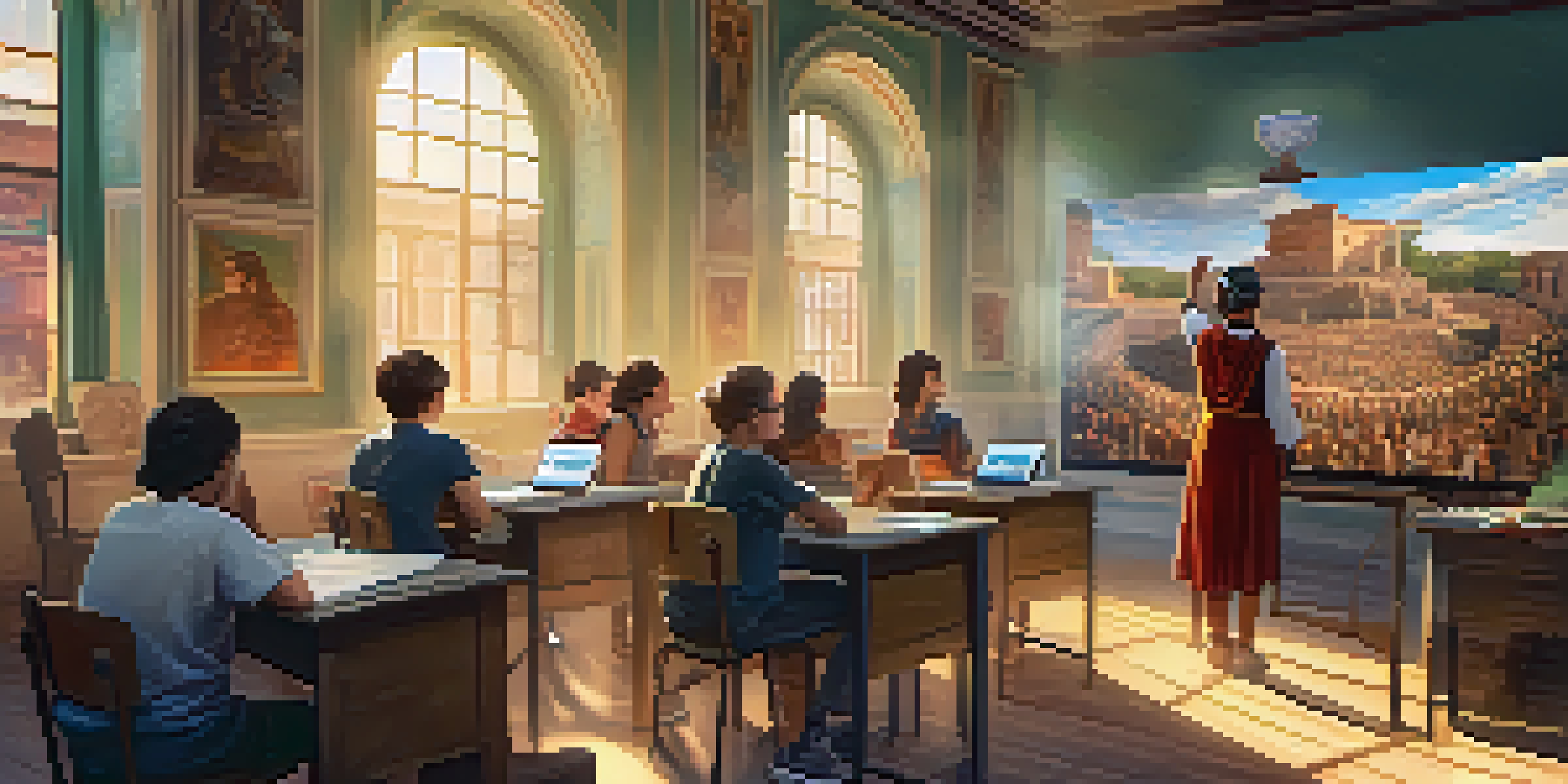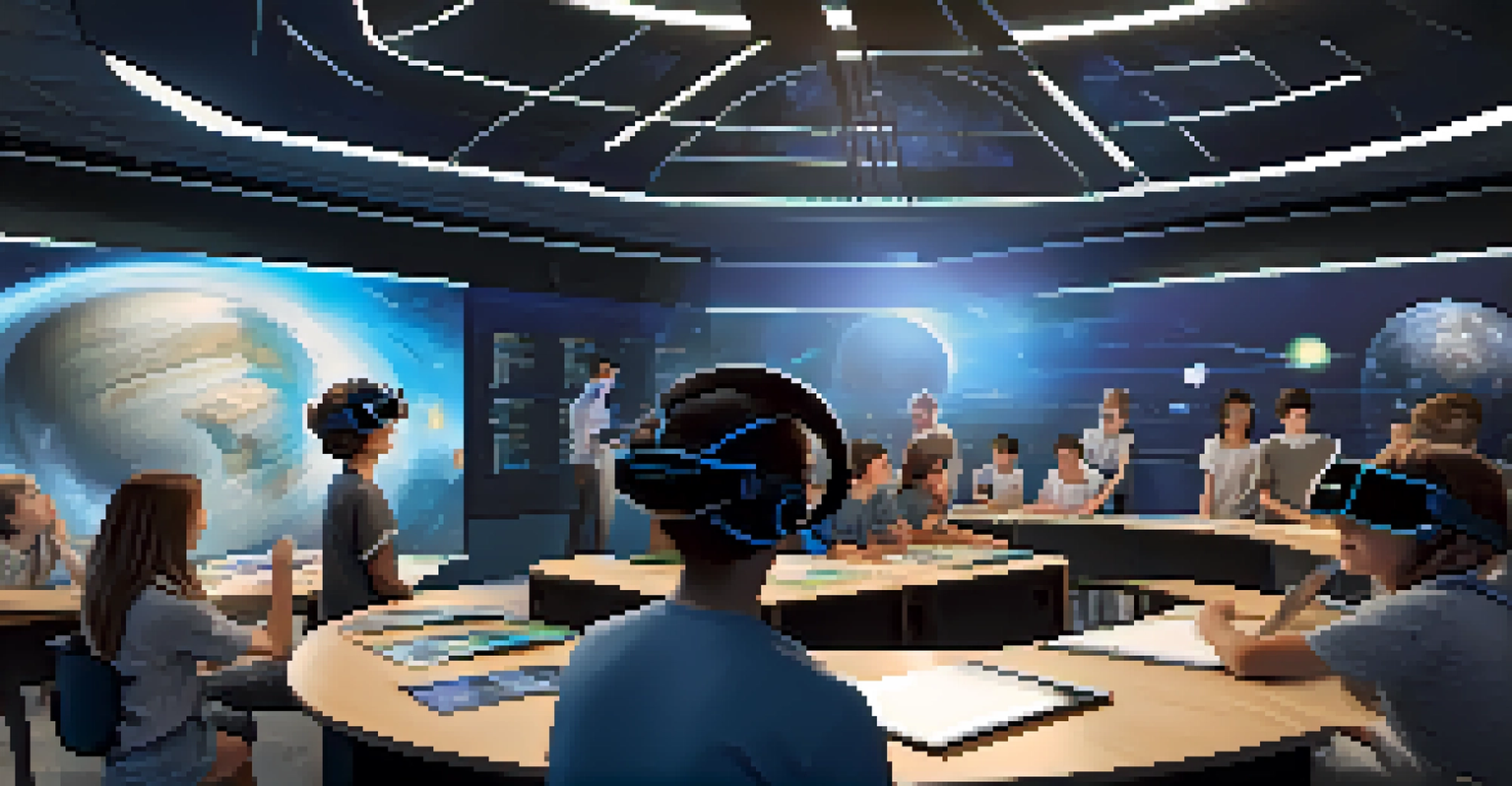Virtual Reality: Transforming Learning in NYC Classrooms

The Rise of Virtual Reality in Education
Virtual reality (VR) is making waves in various sectors, and education is no exception. In NYC, schools are increasingly adopting VR technology to create immersive learning experiences. This shift is not just a trend; it's a transformative approach to how students engage with their subjects.
Virtual reality is the first step in a world where we can exploit the capabilities of our mind in ways we have never imagined.
Imagine stepping into a historical event or exploring the solar system without leaving your classroom. With VR, students can experience these scenarios firsthand, enhancing their understanding and retention of complex topics. This active participation makes learning more engaging and memorable.
As educators seek innovative ways to captivate their students, VR offers a fresh perspective that traditional teaching methods sometimes lack. By integrating technology into the curriculum, NYC classrooms are evolving to meet the needs of 21st-century learners.
Enhancing Engagement and Motivation
One of the significant benefits of VR in education is its ability to boost student engagement. When students don VR headsets, they are transported to new worlds, making the learning process exciting and interactive. This heightened level of engagement can lead to improved motivation and participation in class.

For example, instead of reading about ancient civilizations, students can walk through a virtual replica of a Roman forum. This immersive experience not only sparks curiosity but also encourages deeper exploration of the subject matter. Students are more likely to invest themselves in lessons that feel dynamic and relevant.
VR Enhances Student Engagement
Virtual reality significantly boosts student engagement by providing immersive and interactive learning experiences.
As engagement rises, so does retention. Research has shown that students are more likely to remember information when they experience it in a vivid, interactive way. By leveraging VR, NYC educators are tapping into an effective method for fostering a love of learning.
Promoting Collaboration Among Students
VR isn't just about individual experiences; it also fosters collaboration among students. Many VR platforms allow multiple users to interact in a shared virtual space, encouraging teamwork and communication. This collaborative aspect mirrors real-world situations, preparing students for future group dynamics.
Education is the most powerful weapon which you can use to change the world.
Imagine a group of students solving a virtual problem together, where they must communicate and strategize to succeed. Such experiences teach valuable skills like collaboration, critical thinking, and adaptability. These are essential skills in today's workforce and are often best learned through hands-on experiences.
In NYC classrooms, this means students are not only learning content but also essential soft skills that will benefit them in their academic and professional futures. VR serves as a bridge between theoretical knowledge and practical application.
Catering to Diverse Learning Styles
Every student learns differently, and VR has the potential to accommodate a variety of learning styles. Visual learners, for instance, thrive in environments where they can see concepts in action, while kinesthetic learners benefit from hands-on experiences. VR offers a unique solution that caters to these diverse needs.
With immersive simulations, students can manipulate objects and visualize complex ideas, making learning more accessible. This adaptability makes VR a powerful tool for educators looking to ensure that all students can engage with the material effectively.
Collaboration Through VR Technology
VR fosters collaboration among students by allowing them to work together in shared virtual spaces, enhancing teamwork skills.
As a result, NYC classrooms are becoming more inclusive, where every student has the opportunity to succeed. By embracing VR technology, educators are acknowledging and addressing the varied ways in which students absorb information.
Real-World Applications of VR in Curriculum
Incorporating VR into the curriculum doesn't just enhance engagement; it also provides real-world applications of learned concepts. For instance, students studying biology can explore the human body in 3D, observing processes like circulation and respiration up close. This practical approach helps bridge the gap between theory and practice.
Additionally, subjects like geography come alive when students can explore different terrains and climates virtually. Instead of memorizing facts, they can understand the impact of geography on cultures and human behavior through firsthand experience.
This innovative approach prepares students for future academic pursuits and equips them with critical thinking skills necessary for real-world problem-solving. By connecting lessons to the outside world, NYC educators are enriching the educational landscape.
Challenges of Integrating VR in Classrooms
While the benefits of VR are significant, there are challenges to its integration in NYC classrooms. One major hurdle is the cost of equipment and software, which can be a barrier for many schools. Ensuring equitable access to technology is essential for all students to benefit from this powerful learning tool.
Moreover, teachers require proper training to effectively implement VR in their lessons. Without adequate support and resources, the potential of VR could be underutilized. Professional development programs are crucial in empowering educators to harness the full capabilities of this technology.
Diverse Learning Styles Supported
By accommodating various learning styles, VR ensures that all students can effectively engage with educational material.
Despite these challenges, the desire for innovation is strong. As more schools invest in VR and training, the future of education in NYC looks promising, paving the way for broader adoption of this transformative technology.
The Future of VR in Education
Looking ahead, the future of VR in education is bright, especially in NYC. As technology continues to evolve, we can expect even more advanced and accessible VR solutions for classrooms. This evolution will likely include more user-friendly platforms and diverse content tailored to various subjects and age groups.
Furthermore, as educators share success stories and best practices, the momentum for VR in education will grow. Schools may collaborate to develop shared resources, ensuring that all students have access to immersive learning experiences, regardless of their school's budget.

Ultimately, the integration of VR in NYC classrooms represents a commitment to innovation and excellence in education. By embracing this technology, educators are not just preparing students for the future; they are actively shaping a new era of learning.